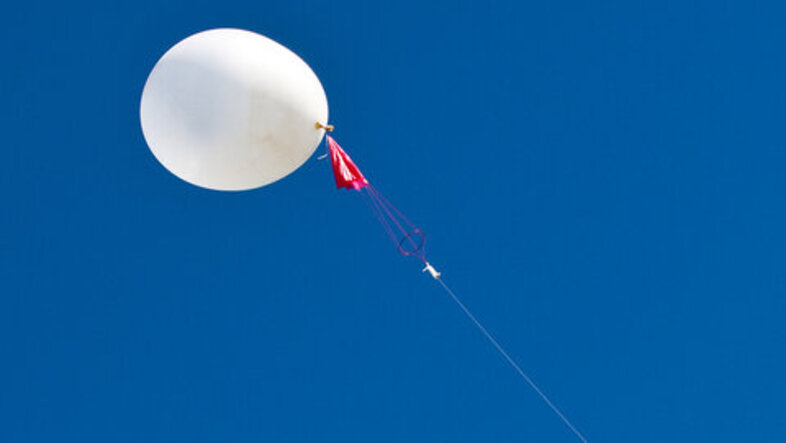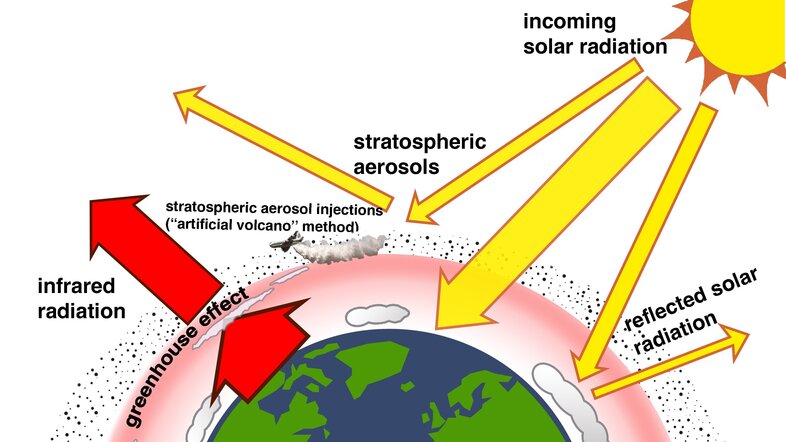A planetary sunscreen can probably cool the climate, but not solve the climate crisis
In late December, American startup "Make Sunsets" announced that it had completed outdoor testing of artificial climate cooling by releasing balloons that inject sulfur dioxide high in the atmosphere (the stratosphere), causing widespread outrage in the scientific community and the general public.
What is sulfur dioxide and how does it affect the climate?
Sulfur dioxide is a naturally occurring colorless gas with a strong, choking smell. It can form small, reflective particles called aerosols. Such aerosols are very acidic in large quantities, which is why it is a main cause of acid rain. Moreover, sulfur aerosols act as a giant planetary sunscreen, blocking some of the sunlight from reaching the surface, and thus cooling the climate. Large volcanic eruptions can occasionally greatly increase the amount of sulfur dioxide and aerosols in the stratosphere and cool the Earth's surface. A similar cooling effect could be also induced artificially by injecting sulfur dioxide or aerosols into the stratosphere. The stated goal of the start-up "Make Sunsets" is to do just that and in this way counteract global warming.
We simply don't know enough about solar engineering
Ideas to cool the Earth by manipulating the radiation balance are referred to as "solar geoengineering" and have been a topic of academic research for several decades. To date, this research has shown that solar geoengineering might reduce impacts caused by climate change in most world regions, but there are still many uncertainties. Moreover, reducing the sunlight that reaches Earth's surface will not compensate for effects on greenhouse gas changes (for example, the increased acidity of the ocean), and it would be only a rough correction for other climate impacts (like precipitation patterns).
Studies have also pointed to several risks from increased stratospheric aerosols, including the depleting of the ozone layer that protects us from harmful ultraviolet radiation, as well as the potential to change weather patterns in multiple parts of the world. In addition, the effects of geoengineering on ecosystems and agriculture are still largely unknown.
What is solar geoengineering?
The goal of solar geoengineering is to manipulate Earths' climate system to counteract global warming by reflecting a portion of sunlight back into space. In addition to the described "artificial volcano" method, two other techniques of solar geoengineering have been proposed (marine cloud brightening and cirrus cloud thinning). They are based on changing the properties of clouds, which influence not only the amount of radiation reflected before reaching the Earth's surface, but also the amount of outgoing radiation. While the details of their implementation and possible side effects are very different from the "artificial volcano" method, they are associated with even greater uncertainties related to their deployment.
To learn more about solar geoengineering, we recommend a new report recently released by the United Nations Environment Programme (UNEP).
The idea: Introduce sulfur with weather balloons – and sell it
Make Sunsets tried to introduce a small amount of sulfur with a weather balloon to demonstrate the capability of delivering sulfur to high altitudes.The climate impact from this experiment is negligible: the delivered material was 100 billion times less than that expected to produce climate impacts.
So why all this outrage after just a tiny balloon release? Make Sunsets assumed the delivery would work and have the intended effect, and did not engage in any way with society or the relevant scientific community to accomplish its goals. Furthermore, they have been financing more such balloons by selling "cooling credits" to the public. This is not only a bad idea, but also an unprecedented provocation, which is why it was poorly received by the more cautious community of researchers that have been studying benefits and risks associated with solar geoengineering.
The moral hazards of solar geoengineering
In addition to the scientific uncertainties of solar geoengineering, there are other risks; for example, knowing that an additional method exists to treat the symptoms of climate change could delay the reduction of greenhouse gas emissions, especially without suitable governance committed to the latter's implementation. The use of geoengineering without strong reductions of greenhouse gases could make society dependent on even ever-increasing use of geoengineering.
In summary, solar geoengineering is not a solution to the climate crisis because it does not address the cause of climate change. Geoengineering can be seen as a "painkiller" that temporarily mitigates some climate damage, but we need to continue to implement ambitious greenhouse gas reductions to eliminate the need for geoengineering.
The use of geoengineering without strong reductions of greenhouse gases could make society dependent on even ever-increasing use of geoengineering.Blaž Gasparini
It is still important to explore geoengineering – and the University of Vienna is well equipped to do so
However, despite the risks associated with geoengineering, I believe it is wiser to understand these risks, and investigate the role these controversial methods could and could not play in limiting the impact of the climate crisis, rather than turning a blind eye and pretending they do not exist (and, in the worst-case scenario, leaving it up to actors like Make Sunsets).
This is also a great opportunity for the University of Vienna, which should make use of its broad expertise in environmental sciences, economics, law, ethics, history, etc. The newly established Environment and Climate Research Hub is ideally suited to address such a multifaceted transdisciplinary problem of high societal relevance and to place our university at the forefront of interdisciplinary climate research.
The author would like to thank Iris de Vries, Marina Dütsch, Philip J. Rasch, Vanessa Rieger for their constructive feedback.
He started his academic career at the ETH Zürich in Switzerland with a Ph.D. that focused largely on understanding whether artificial modifications of cirrus clouds can cool the climate. After his PhD, he spent three years at the University of Washington in Seattle, USA, studying the impact and evolution of tropical thunderstorm clouds on climate. Gasparini is member of the Environment and Climate Research Hub (ECH) at the University of Vienna.
![[Translate to English:] Ausbruch des Pinatubo [Translate to English:] Große Aschewolken nach Vulkanausbruch](/fileadmin/_processed_/b/1/csm_Gasparini_Eruption_Pinatubo_Volcano_CR_R.S._Clulbreth_United_States_Geological_Survey_Flickr_8faf45a6d3.jpg)

